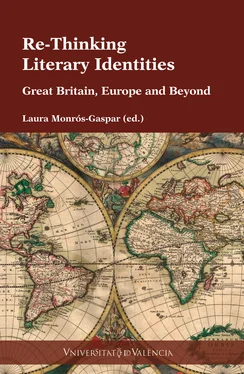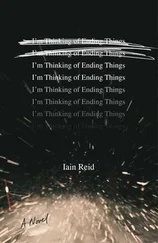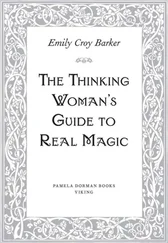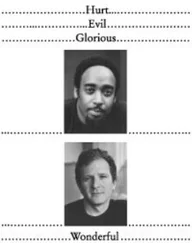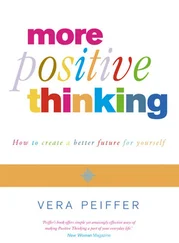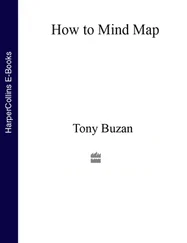AAVV - Re-Thinking Literary Identities
Здесь есть возможность читать онлайн «AAVV - Re-Thinking Literary Identities» — ознакомительный отрывок электронной книги совершенно бесплатно, а после прочтения отрывка купить полную версию. В некоторых случаях можно слушать аудио, скачать через торрент в формате fb2 и присутствует краткое содержание. Жанр: unrecognised, на английском языке. Описание произведения, (предисловие) а так же отзывы посетителей доступны на портале библиотеки ЛибКат.
- Название:Re-Thinking Literary Identities
- Автор:
- Жанр:
- Год:неизвестен
- ISBN:нет данных
- Рейтинг книги:3 / 5. Голосов: 1
-
Избранное:Добавить в избранное
- Отзывы:
-
Ваша оценка:
- 60
- 1
- 2
- 3
- 4
- 5
Re-Thinking Literary Identities: краткое содержание, описание и аннотация
Предлагаем к чтению аннотацию, описание, краткое содержание или предисловие (зависит от того, что написал сам автор книги «Re-Thinking Literary Identities»). Если вы не нашли необходимую информацию о книге — напишите в комментариях, мы постараемся отыскать её.
Re-Thinking Literary Identities — читать онлайн ознакомительный отрывок
Ниже представлен текст книги, разбитый по страницам. Система сохранения места последней прочитанной страницы, позволяет с удобством читать онлайн бесплатно книгу «Re-Thinking Literary Identities», без необходимости каждый раз заново искать на чём Вы остановились. Поставьте закладку, и сможете в любой момент перейти на страницу, на которой закончили чтение.
Интервал:
Закладка:
Hurley’s comparison between the inclusive dramaturgy of The Bloody Great Border Ballad Project and the traditional ceilidh (an informal social gathering, usually including a combination of music, singing, and storytelling) stresses the fact that not only does each new voice have the potential to transform the song being sung, but that each also potentially transforms the community of performers they become part of. As a result, the song/story of the foundling becomes a catalyst for the creation of a new community of balladeers, a group of collaborating artists patching together an imagined future from whatever materials come to hand.
The story of the foundling begins in the geopolitical context of a split between Scotland and England, but soon begins to engage with a much wider range of potential identities, not only for the baby in the basket, but also for the nations she floats between. Alan McKendrick’s contribution envisages the infant receiving her early education in a Scottish school run ‘by pro-European cosmopolitan scum’, acquiring linguistic skills in German and Danish as well as English (Part 1), while Yusra Warsama’s verse reminds the foundling that ‘your first bones rest patiently in the lands of Abyssinia’ (Part 5). Later, in the context of environmental change and an abandonment of the Central Belt, Jenna Watt’s protagonist will pass through ‘the bustling international part of John O Groats’, en route to a new constellation of northern European powers: ‘Orkney, Shetland, the Faroe Islands, Norway, Iceland, Svalbard / or Newcastle’ (Part 8). Andy Field contributes a police WANTED notice for the woman whose ‘rootlessness / Could unshackle continents’ (Part 10), and one of the recurring preoccupations of this self-consciously shape-shifting ballad is the possibility that a future Scotland might re-locate itself, turning away from its southern border in order to become a northern European nation among its historic, seafaring neighbours, like the ballad’s protagonist exploring ‘all the world will allow’ (Part 1). But with this international perspective comes anxiety, too. Will an English-bred girl be a ‘mixed-race’ interloper in a new Scotland (Part 4)? Will the foundling’s grandchild speak with ‘that strange American accent all the young people share’, a globalized ‘British yankee chat’ that marks the effective end of all local identities (Part 13)? The ballad offers no firm or fixed answers. Instead, it gives impassioned, inclusive voice to a cross-section of the insistent (and perhaps unanswerable) questions which fuelled pre-Referendum debates both in Scotland, and beyond.
Another recurring theme in The Bloody Great Border Ballad Project ’s collective creation is a resistance to man-made, exclusionary border-lines. The heroine of Selma Dimitrijevic’s verse passionately rejects the Scotland/England binary presented to her, refusing to decide between ‘her countries’ (Part 6). However, Warsama warns the growing young woman that:
The Berlin Wall sits and fits sweetly in Palestine, also dwelling elsewhere and this land, you live, forming barriers that are now made to divide cousins, borders that form hard backs and keep people up against a wall. (Part 5)
Jemma McDonnell similarly cautions that: ‘Bricks and stone, fences and barbed wire, borders are erected all over the world’ (Part 9). ‘ Free? Is she Fuck.’ sing Ross Sutherland’s pissed immigration thugs, parodying the optimism of the ballad-in-progress’ own chorus as they clamp down on refugees from an England swamped by rising sea-levels, and attempt to violently silence the foundling’s protests. Yet Sutherland’s verse also ends on a note of (muted) hope, with subversive words (‘Fuck England. Fuck Scotland.’) filtering through walls (Part 11). As McFadyen (adapting the theories of Jean-Luc Nancy) argues, the aural experience of ballad singing/listening acts to dissolve boundaries between co-present individuals: ‘to hear a sound is to share or actually participate in the source of that sound’ (2013: 161). So it’s entirely fitting that the verses of the Bloody Great Border Ballad Project frequently critique and subvert fixed borders and binaries. As Andy Field’s verse concludes, love (like McFadyen’s account of participating in traditional song):
is not knowing if you are
one thing
Or two
things
Or
everything. (Part 10)
The new ballad’s foundling, floating (Moses-like) in her basket, is the prophet of a future which is unstable, incoherent, potentially terrifying, but also insistently plural and hopeful. And she is born out of the creative activities of an oral/aural community (however temporary) which actively seeks to transcend barriers of associated with national identity or political affiliation, resulting in the opening up of an expansive, inclusive imaginative space which ‘is not defined by […] material walls’ (McFadyen 2013: 161).
In this way, The Bloody Great Border Ballad Project constitutes an idealistic gesture towards a future envisaged as an ongoing act of collective creation, rooted in collaborative imagining. Not only the multi-authored ballad, but also the context(s) of its creation, activate a utopian sense that positive change might emerge out of a process of convivial exchange. The performance itself is low-tech, with the ballad’s chorus hand-written and shared via the appealingly outdated technology of the overhead projector (the resulting vibe halfway between an openmic pub night and a primary school assembly). Guest balladeers take centre-stage diffidently, stepping back to stand alongside others as they sing the ballad’s chorus. Some introduce their own collaborators, like Catherine Bennett (Bryony Kimmings) whose verse was composed with the help of two nine year olds, their recorded comments (including a shared enthusiasm for flying cars) punctuating her performance (Part 4). This laid-back aesthetic also acted as an invitation to wider participation, with audience members singing along, tapping feet and swaying in time to the music. Audiences were additionally invited to engage in communication with others who have been/will be in the same space, listening to a song recorded by their forerunners, and then recording their own musical offering for the strangers who would later be taking part in creating the same emergent story (Love 2013). The combination of silliness, care, and generosity evident in this device is characteristic of The Bloody Great Border Ballad Project , a work which celebrated shared anxieties, uncertainties, and fantasies, rather than insisting on singular answers and exclusive national identities, and which used the model of the traditional Borders ballad in order to facilitate a rich, various and generous conversation between artists and spectators belonging to any political/national identity, and those identifying with none. For the makers of The Bloody Great Border Ballad Project , traditional practices of singing (and making songs) together offered a means of achieving small-scale social interactions which (in line with ‘the social turn’ as defined by Harvie) ‘do not propose to save the world’, but which potentially ‘model shared participation, engagement, community, and responsibility-taking’ (2013: 40) in self-deprecating, inclusive and good-humoured ways.
Rantin (2013)
This deliberate mood of laid-back conviviality was central to another project developed by one of the show’s core company members, Kieran Hurley. Like both The Bloody Great Border Ballad Project and The Strange Undoing of Prudencia Hart, Rantin (created by Hurley, together with Liam Hurley, Gav Prentice, Julia Taudevin and Drew Wright, in collaboration with the National Theatre of Scotland, in 2013) immerses its audiences in a gig-like atmosphere, in which the acting company are also the show’s live band, and in which theatregoers’ vocal participation is repeatedly invited. As Hurley assures potential audiences in a trailer for the show, ‘singing along is warmly welcomed’ (National Theatre of Scotland 2014). Drawing on the term used by John McGrath to describe the ground-breaking, folk-fuelled agitprop of The Cheviot, the Stag, and the Black Black Oil (7:84 Scotland, 1973), Hurley describes this work as a ‘ceilidh-play’ (2014: 309), and writes in his introductory note to the play’s published text that the audience is ‘a vital part of the event’, ‘sharing the same space’ as the show’s performers in the inclusive ‘spirit of a ceilidh’ (2014: 309). Hurley’s discussion of the politics of such aesthetic choices also echoes key elements of Greig’s ‘rough theatre’ essay, rooted in a belief that ‘getting together as a polity, being together as a group of people, is always in itself a really important political response to the way the world is’ (Hutton 2013).
Читать дальшеИнтервал:
Закладка:
Похожие книги на «Re-Thinking Literary Identities»
Представляем Вашему вниманию похожие книги на «Re-Thinking Literary Identities» списком для выбора. Мы отобрали схожую по названию и смыслу литературу в надежде предоставить читателям больше вариантов отыскать новые, интересные, ещё непрочитанные произведения.
Обсуждение, отзывы о книге «Re-Thinking Literary Identities» и просто собственные мнения читателей. Оставьте ваши комментарии, напишите, что Вы думаете о произведении, его смысле или главных героях. Укажите что конкретно понравилось, а что нет, и почему Вы так считаете.
